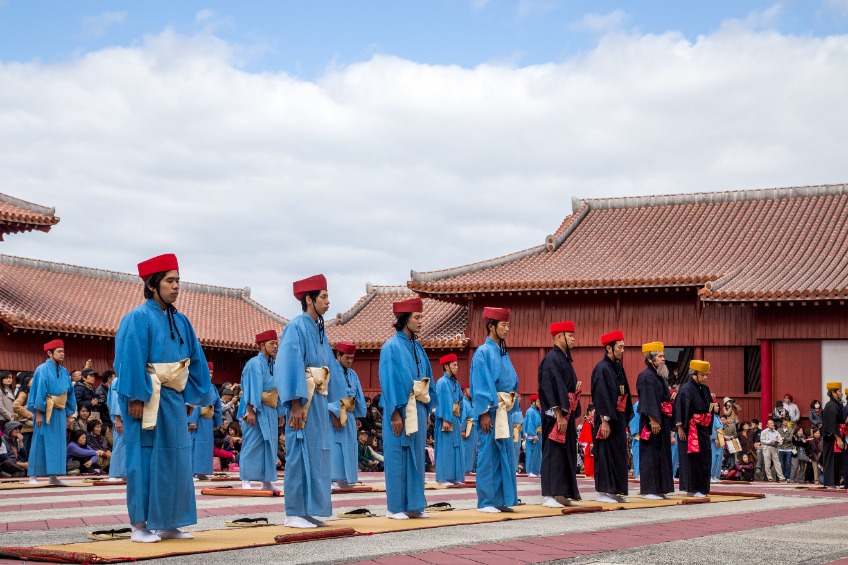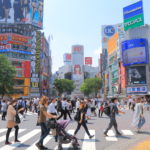Does Japan celebrate Lunar New Year?

Does Japan celebrate Lunar New Year?
As global citizens, we have all come across various cultural customs and practices that might differ from our own. Among these, the New Year celebrations from different parts of the world draw a significant amount of curiosity and interest. While many of us are familiar with the Gregorian New Year’s festivities on January 1st, many eastern countries, notably China, Vietnam, and South Korea, celebrate the New Year based on the lunar calendar, often referred to as Lunar New Year. This difference leads to an interesting question for those who are interested in Japanese culture – does Japan celebrate the Lunar New Year? This article aims to delve into this topic, exploring the history of calendars in Japan, how the New Year is celebrated currently, and why the Lunar New Year does not hold as significant a place in Japanese culture as it does in some other Asian countries.
Gregorian New Year is celebrated in most areas in Japan
Does Japan celebrate Lunar New Year? In Japan, except for some areas in Okinawa/Amami and Chinatown, the Gregorian New Year is now celebrated. Japanese New Year is synonymous with the Gregorian New Year in Japan.
There are mainly two types of calendars in the world. They are:
・The lunar calendar, in which dates are counted by the phases of the moon.
・The solar calendar, in which one year is defined as the period of one revolution of the earth around the sun.
Japan and Lunar New Year
Japan is one of the countries in the Asian region that does not have the custom of celebrating the Lunar New Year. In Japan, the lunar calendar was in use until before the Meiji Restoration (1868 -1889) and New Year’s Day was celebrated during the Lunar New Year.
However, during the Meiji Restoration (in 1872, to be exact), the government issued a proclamation to switch the calendar to the new calendar, which divided the year into 365 days, January through December. After the switch to the new calendar, the custom of the Lunar New Year gradually fell into disuse in Japan.
In modern Japan, the Gregorian New Year is celebrated, so the Lunar New Year is not a part of most Japanese people’s lives. Most Japanese people are unaware of the Lunar New Year and only hear about it mostly as Chinese New Year on the TV news. So, many people in Japan really do not know what Chinese New Year is.
Why Japan does not celebrate Lunar New Year
One of the reasons why the old new year was abandoned in favor of the new calendar in Japan is that Japan was actively embracing Western culture during the Meiji Restoration. At that time, Japan was trying to Westernize itself by abolishing its customs and traditions. In those days, Westernization was the same as modernization.
After the Meiji period, when the Gregorian calendar was adopted, the old Lunar New Year was still celebrated in some places in Japan. However, after World War II, it was consolidated into the Gregorian calendar and as of now, except in Okinawa Prefecture and the Amami Islands of Kagoshima Prefecture, there are only a few shrines, temples, and local events related to the Lunar New Year. It is also celebrated in China Towns in Japan such as the one in Yokohama.
Over time, the Lunar New Year has maintained a presence in Japanese society. Chinese communities in Japan, such as those in Yokohama and Kobe, have preserved their cultural heritage and continue to celebrate the Lunar New Year. Additionally, with increased globalization and cultural exchange, the Lunar New Year has gained broader recognition and popularity among the general Japanese population.
・The Lunar New Year is the first day of the lunar calendar, which falls on January 1. It is a holiday not only in China, but also in Singapore, Korea, Vietnam, Malaysia, and other countries.
・While New Year’s Day in the Gregorian calendar is fixed as “January 1 every year,” Lunar New Year’s Day falls on “the day when the new moon falls between about mid-January and mid-February,” so the date differs every year.
How Japanese celebrate (Gregorian) New Year Holiday
“Shougatsu”(New Year Holiday) is the most important holiday in Japan, and it is celebrated with various unique customs and traditions. Here are some of them:
- 初詣 (Hatsumoude): It’s the first shrine or temple visit of the New Year. Many Japanese people visit shrines and temples to make wishes for the coming year. While the practice of visiting shrines during the New Year has ancient roots,Tte term “初詣” and the practice of visiting shrines during the New Year became widely popularized during the Meiji era, due to the influence of railway companies promoting travel.
- お年玉 (Otoshidama): This is a custom where children receive money from their parents, grandparents, and other relatives. The money is usually given in small decorated envelopes called “ぽち袋” (pochi-bukuro).
- Duration of the Holidays: In many countries, New Year is celebrated on the evening of December 31st, but in Japan, the New Year holiday typically lasts from December 31st to January 3rd. Many businesses shut down during this period, and people take time off to be with family and follow New Year traditions.
- 福袋 (Fukubukuro): Also known as “lucky bags.” Shops sell these bags filled with random items at the start of the New Year. The contents are typically worth more than the price of the bag, making it a sort of New Year bargain.
Where did lunar new year originate?
The Lunar New Year originated in ancient China. Its exact origins are rooted in myth and legend, making it difficult to pinpoint an exact starting point. However, the festival’s origins can be traced back to the Shang Dynasty (1600-1046 BCE) and the Zhou Dynasty (1046-256 BCE).
Why did it spread to other countries?
The spread of the Lunar New Year to other countries can be attributed to various factors, including migration, cultural exchange, and historical connections. Here are some key reasons for its spread:
Chinese Diaspora: The migration of Chinese communities to other parts of the world played a significant role in spreading the celebration of the Lunar New Year. Chinese immigrants brought their traditions and customs with them, including the observance of the Lunar New Year. As these communities grew and established themselves in different countries, they continued to celebrate the festival, passing it on to future generations.
Cultural Influence: China has a rich and influential cultural history that has had an impact on neighboring countries and regions. As Chinese culture and traditions spread through trade, diplomacy, and cultural exchange, the Lunar New Year celebrations also gained popularity in these regions. Countries like Vietnam, Korea, and Singapore have incorporated their own unique customs and traditions while celebrating the Lunar New Year.
How did it reach Japan?
The Lunar New Year reached Japan primarily through cultural and trade interactions with China. The influence of Chinese culture, including the celebration of the Lunar New Year, can be traced back to ancient times. Here’s a brief overview of how the Lunar New Year spread to Japan:
Cultural Exchange: Japan and China have a long history of cultural exchange dating back centuries. Buddhism, which originated in India but was heavily influenced by Chinese Buddhism, played a significant role in introducing various Chinese customs and traditions to Japan. Aspects of Chinese culture, including the Lunar New Year, were embraced and integrated into Japanese society.
Tang Dynasty Influence: During the Tang Dynasty in China (618-907 CE), cultural exchange between China and Japan flourished. Japan sent missions to China to study various aspects of Chinese culture, including art, literature, religion, and customs. The Lunar New Year, with its deep-rooted significance in Chinese society, likely gained more prominence during this period.
Trade and Diplomacy: Trade and diplomatic relations between China and Japan further facilitated the exchange of cultural practices. Chinese merchants, diplomats, and scholars traveled to Japan, bringing with them Chinese customs, including the celebration of the Lunar New Year. These interactions helped familiarize the Japanese with Chinese traditions and fostered their adoption.
Japanese Adaptation: While the Lunar New Year originated in China, Japan adapted the celebration to suit its own cultural context. The Japanese New Year, known as “Oshogatsu,” has elements that align with the Lunar New Year. However, Oshogatsu also incorporates unique Japanese customs and traditions, such as the first visit to a Shinto shrine (Hatsumode) and the consumption of special New Year dishes (Osechi).
Historical Connections: Throughout history, various regions have had historical connections with China, leading to the exchange of ideas, culture, and traditions. These interactions facilitated the spread of the Lunar New Year celebration to neighboring countries. For example, the Lunar New Year festivities in Vietnam, known as Tết, have similarities to Chinese New Year due to the historical influence of Chinese culture on Vietnam.










